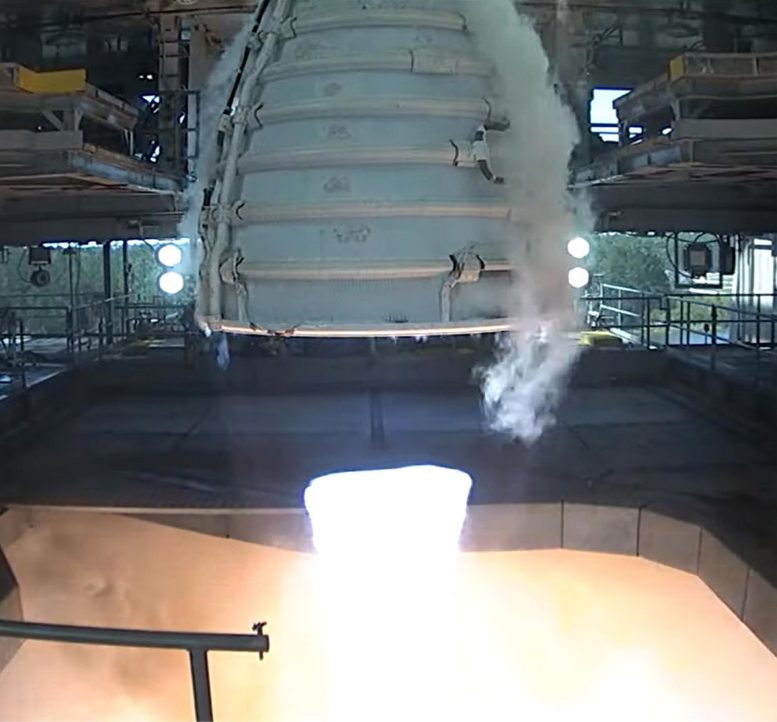
NASA successfully conducted a 10-minute hot fire of an RS-25 certification engine on March 21, surpassing the required power levels and duration for SLS missions, ensuring the engine’s safety and performance capabilities. Credit: NASA/Stennis
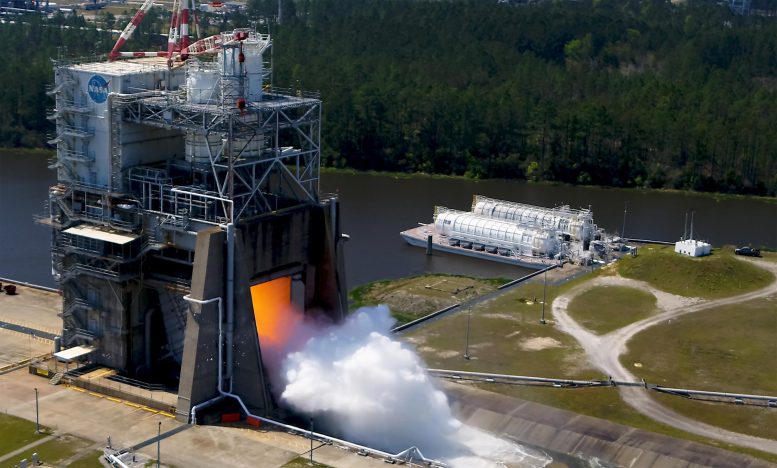
NASA’s RS-25 certification engine underwent an extensive hot fire test on March 21, demonstrating advanced manufacturing techniques such as 3D printing by lead contractor Aerojet Rocketdyne, promising reduced costs and faster production for future Artemis missions. Credit: NASA/Stennis
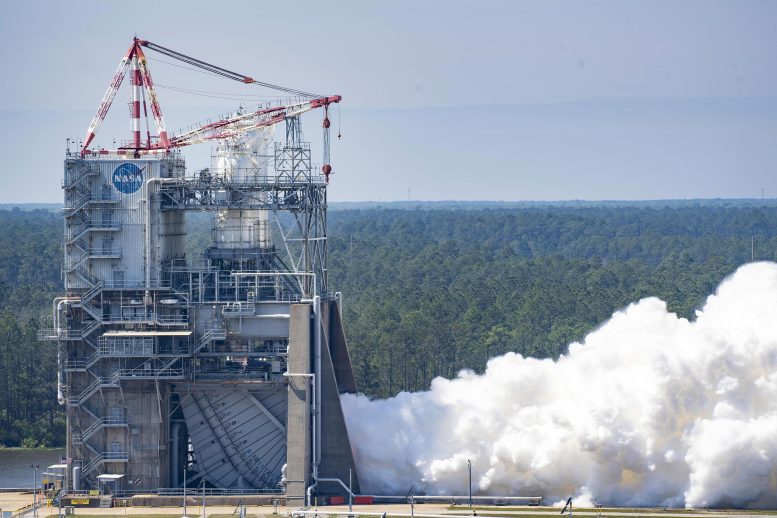
As part of the Artemis missions, NASA tested an RS-25 certification engine at the Stennis Space Center, pushing it to 113% power level, showcasing its readiness for deep space exploration. Credit: NASA/Stennis
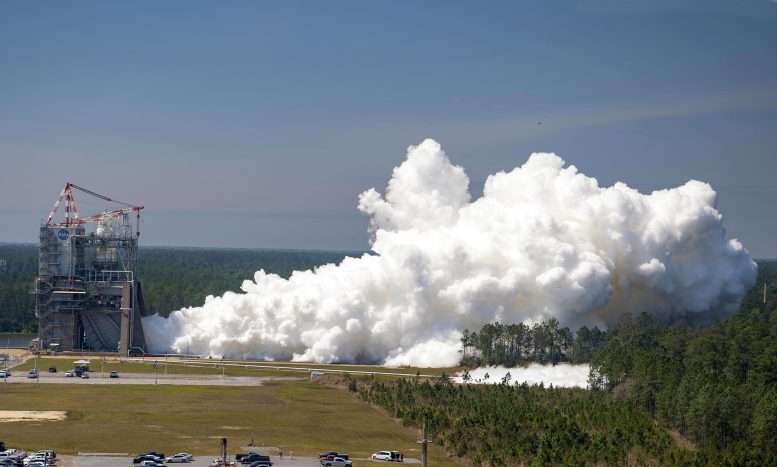
The March 21 hot fire test of the RS-25 certification engine marked the fourth in a series aimed at validating new engine production by Aerojet Rocketdyne, crucial for powering the Space Launch System during Artemis missions to the Moon. Credit: NASA/Stennis
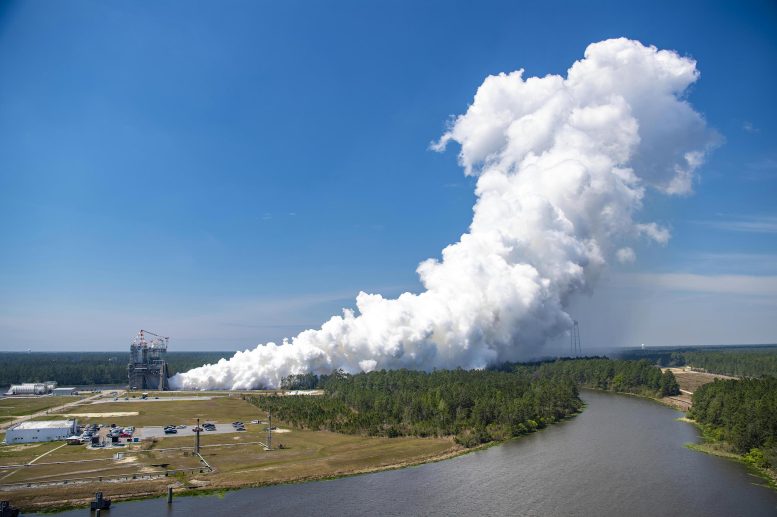
NASA’s recent long-duration hot fire test of the RS-25 certification engine at Stennis Space Center proved its capabilities and safety margins, setting the stage for its role in powering the Space Launch System on Artemis missions to deep space. Credit: NASA/Stennis
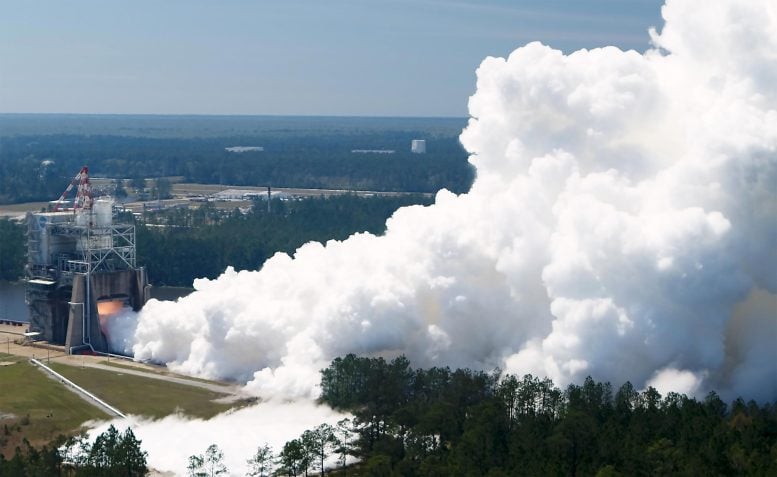
On March 21, NASA carried out an extended hot fire test of the RS-25 certification engine, pushing it beyond required levels, which validated its performance and safety for the Space Launch System and future Artemis missions to deep space. Credit: NASA/Stennis
NASA conducted a long-duration hot fire of an RS-25 certification engine on March 21, continuing a key series of testing to support future Space Launch System (SLS) missions to deep space as part of Artemis missions as the agency continues to inspire the world through discovery.
Operators fired the certification engine for 10 minutes (600 seconds), longer than the 500 seconds engines must fire during an actual mission, on the Fred Haise Test Stand at NASA’s Stennis Space Center near Bay St. Louis, Mississippi. Operators also fired the engine up to 113% power level, exceeding the 111% level needed during SLS launch. Hot fires of longer duration and higher power level allow operators to test the limits of engine performance and provide a margin of safety for flight operations. The March 21 hot fire was the fourth test in a series that began in early February to certify production of new RS-25 engines by lead contractor Aerojet Rocketdyne. The company is using advanced manufacturing techniques, such as 3D printing, to reduce the cost and time needed to build new engines for use on missions beginning with Artemis V. Four RS-25 engines help power SLS at launch, including on its Artemis missions to the Moon.
With Artemis, NASA is embarking on a historic mission to bring humans, including the first woman and the first person of color, back to the Moon for lunar exploration and to lay the groundwork for future Mars expeditions. The Space Launch System (SLS) stands as the sole rocket with the capability to transport the Orion spacecraft, astronauts, and essential supplies to the Moon in one comprehensive mission.


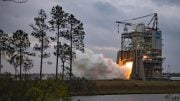

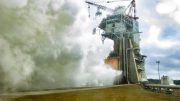
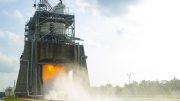
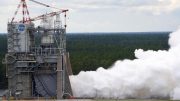

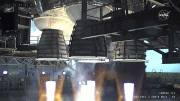
Be the first to comment on "NASA Conducts Long Duration Hot Fire Test of Redesigned RS-25 Moon Rocket Engine"